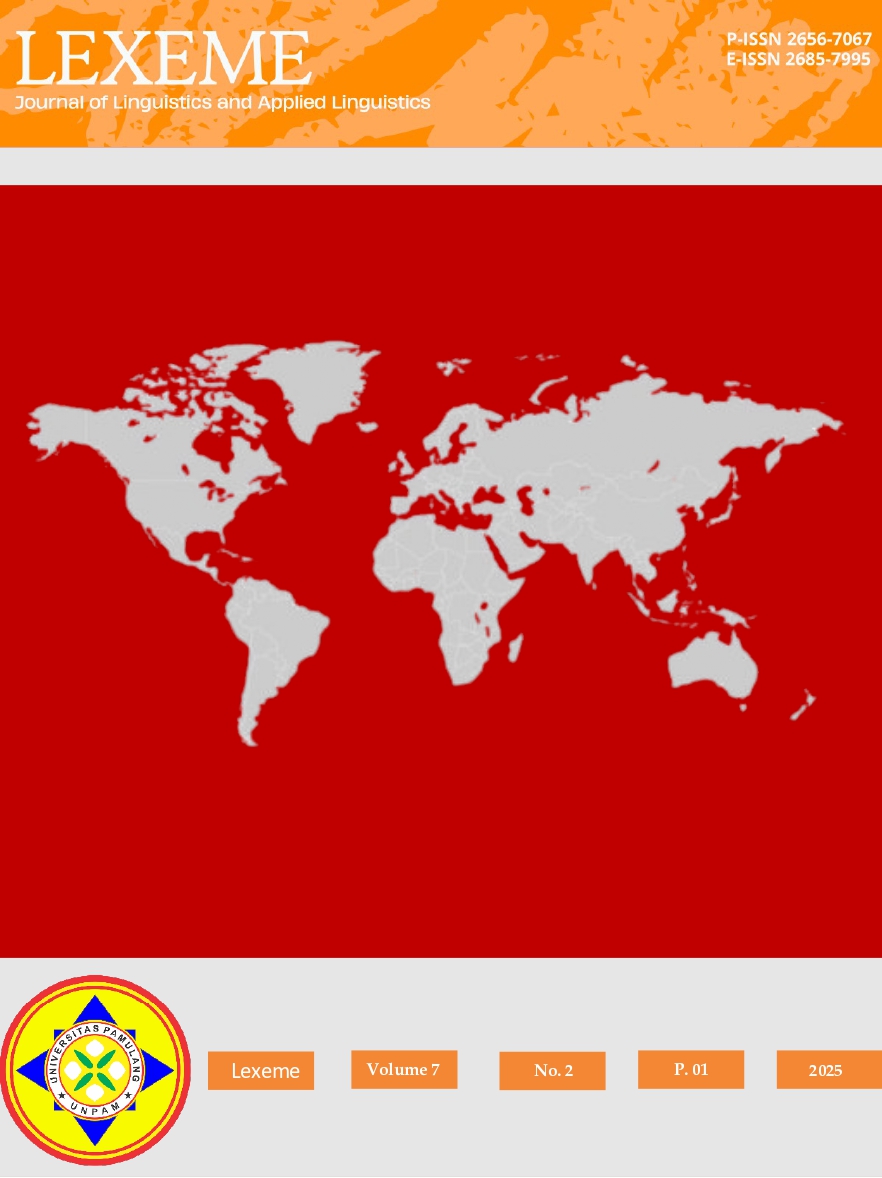Exploring Environmental Responsibility and Justice in Don’t Look Up Movie: A Kerafian Ethical Analysis
DOI:
https://doi.org/10.32493/ljlal.v7i1.46472Keywords:
Kerafian ethical analysis, movie, public environmental consciousnessAbstract
Amid escalating global environmental crises, environmental images in movies play an indispensable role in shaping public consciousness and attitudes toward ecological challenges. This study investigates the portrayal of environmental ethics in the film Don’t Look Up (2021) through Kerafian ethical analysis. As environmental degradation intensifies, cinematic media emerges as a pivotal force in fostering awareness and influencing public perceptions. A qualitative content analysis was conducted, analyzing key scenes and dialogues to identify and interpret ethical themes in the film, guided by the theoretical constructs from Keraf (2010) to extract and categorize ethical themes. Through the analysis of key scenes and dialogues, the study elucidates how these principles manifest, offering a critique of humanity’s inadequate response to ecological threats. Data were collected through a systematic examination of the film’s narrative, focusing on the integration of core ethical principles, including responsibility, cosmic solidarity, compassion for nature, justice, and democracy (Keraf, 2010). The findings reveal that the film emphasizes collective action, moral accountability, and the urgency of environmental preservation, while simultaneously critiquing political inertia and self-interest. The study underscores the potential of cinematic media to enhance environmental awareness and mobilize public attitudes, positioning Don’t Look Up as a compelling narrative that critiques humanity’s inadequate response to ecological threats
References
Aziz, I. S. A. A., Rakhmawati, A., & Wardani, N. E. (2023). Folktale of Sewawar Karanganyar Waterfall in Literary Ecological Perspective. International Journal of Multicultural and Multireligious Understanding, 10(12), Article 12. https://doi.org/10.18415/ijmmu.v10i12.5136
Hadi, S., Sjah, T., & Sarjan, M. (2024). Peran Manusia dalam Mempertahankan Ketersediaan Sumber Daya Alam melalui Etika Lingkungan. Lamda: Jurnal Ilmiah Pendidikan MIPA Dan Aplikasinya, 4(2), Article 2. https://doi.org/10.58218/lambda.v4i2.907
Halim, N. M., Taufik, M., & Fisdarnianti, F. (2024). The Representation of Skepticism in Don’t Look Up Film: An Overview of Current Environmental Issue. Indonesian Journal of English Language Studies (IJELS), 10(2), Article 2. https://doi.org/10.24071/ijels.v10i2.8616
Keraf, A. S. (2010). Etika lingkungan hidup. Jakarta: Penerbit Buku Kompas.
Lolang, E., Rais, R., Oualeng, A., & Prayitno, M. A. (2023). Analysis of Educational Messages in The Lion King Movie: Perspectives on Character Education and Environmental Conservation. COMPETITIVE: Journal of Education, 2(2), Article 2. https://doi.org/10.58355/competitive.v2i2.24
Said, M. Y., & Nurhayati, Y. (2020). Paradigma Filsafat Etika Lingkungan dalam Menentukan Arah Politik Hukum Lingkungan. Al-Adl : Jurnal Hukum, 12(1), Article 1. https://doi.org/10.31602/al-adl.v12i1.2598
Sugiyono. (2013). Metode Penelitian Kuantitatif, Kualitatif, dan R&D. Bandung: Alfabeta.
Downloads
Published
How to Cite
Issue
Section
License
Copyright (c) 2025 Abdul Ayiz, Ana Shofiana Jamilah

This work is licensed under a Creative Commons Attribution-ShareAlike 4.0 International License.







